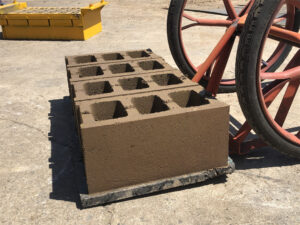The brick industry in Armenia has undergone significant transformations in recent years, reflecting the country’s economic growth and the increasing demand for construction materials. Armenia, a landlocked country located in the South Caucasus region, boasts a rich history and culture, and its brick-making traditions date back centuries. Today, the brick industry stands as a crucial component of the country’s industrial sector, contributing significantly to the economy and employment.
 Current Development Status of the Brick Industry in Armenia
Current Development Status of the Brick Industry in Armenia
1. Industry Overview
The Armenian brick industry has evolved from traditional, labor-intensive methods to more modern and automated production processes. A number of brick factories have been established across the country, catering to the needs of the domestic market as well as exporting to neighboring countries. These factories range from small-scale operations to larger, more industrialized units, each with its own unique production capabilities and market positioning.
2. Technological Advancements
One of the most notable developments in the Armenian brick industry is the increasing adoption of advanced technologies. Many brick factories have invested in automated brick-making machines that significantly improve production efficiency and quality. These machines are capable of producing a wide range of brick sizes and shapes, meeting the diverse needs of the construction industry. Additionally, the use of computer-aided design (CAD) and other digital tools has enabled factories to optimize their production processes and reduce waste.
 3. Quality Control and Standards
3. Quality Control and Standards
With the increasing competition in the brick market, quality has become a crucial factor for success. Armenian brick factories have recognized the importance of implementing strict quality control measures and adhering to international standards. This involves rigorous testing of raw materials, regular inspections of production processes, and quality checks on finished products. By ensuring the consistency and durability of their bricks, Armenian brick factories have been able to establish a reputation for high-quality products, attracting both domestic and international customers.
4. Market Demand and Export Potential
The Armenian brick industry faces a steadily growing demand from the construction sector. As the country’s economy continues to expand and infrastructure projects proliferate, the need for bricks and other construction materials increases. This trend is expected to continue in the foreseeable future, providing ample opportunities for brick factories to expand their operations and capture a larger share of the market.
Moreover, Armenian bricks have also gained popularity in international markets, particularly in neighboring countries. Their competitive pricing, high quality, and diverse range of products make them attractive to foreign buyers. Armenian brick factories have capitalized on this export potential, establishing partnerships with international distributors and participating in trade exhibitions to promote their products.
5. Challenges and Opportunities
Despite the positive developments in the Armenian brick industry, there are still several challenges that need to be addressed. One of the main challenges is the availability of raw materials. Armenia’s brick factories rely heavily on local clay deposits, but the quality and quantity of these deposits can vary significantly. This can affect the consistency of the bricks and limit the factories’ production capabilities. To overcome this challenge, factories need to explore alternative raw materials or invest in technologies that can process a wider range of materials.
Another challenge is the competition from imported bricks. Armenia’s brick market is open to imports, and some foreign bricks are priced competitively. This can pose a threat to local brick factories, especially those with limited production capabilities or limited market reach. To compete effectively, Armenian brick factories need to focus on enhancing their production efficiency, improving product quality, and expanding their marketing efforts.
However, despite these challenges, the Armenian brick industry also presents numerous opportunities for growth. With the country’s economic development and infrastructure investments, the demand for bricks is expected to continue to grow. Additionally, the increasing awareness of environmental sustainability among consumers and policymakers creates opportunities for brick factories to develop eco-friendly products and processes. By investing in research and development, Armenian brick factories can stay ahead of the curve and capitalize on these emerging trends.
6. Conclusion
In conclusion, the Armenian brick industry is experiencing a period of growth and transformation. With the adoption of advanced technologies, strict quality control measures, and a focus on export markets, Armenian brick factories are positioning themselves to capture a larger share of the global market. While challenges such as raw material availability and competition from imports remain, the industry’s potential for growth and innovation is significant. As the Armenian economy continues to develop and infrastructure projects proliferate, the brick industry stands poised to play a crucial role in supporting the country’s construction sector and contributing to its economic prosperity.

